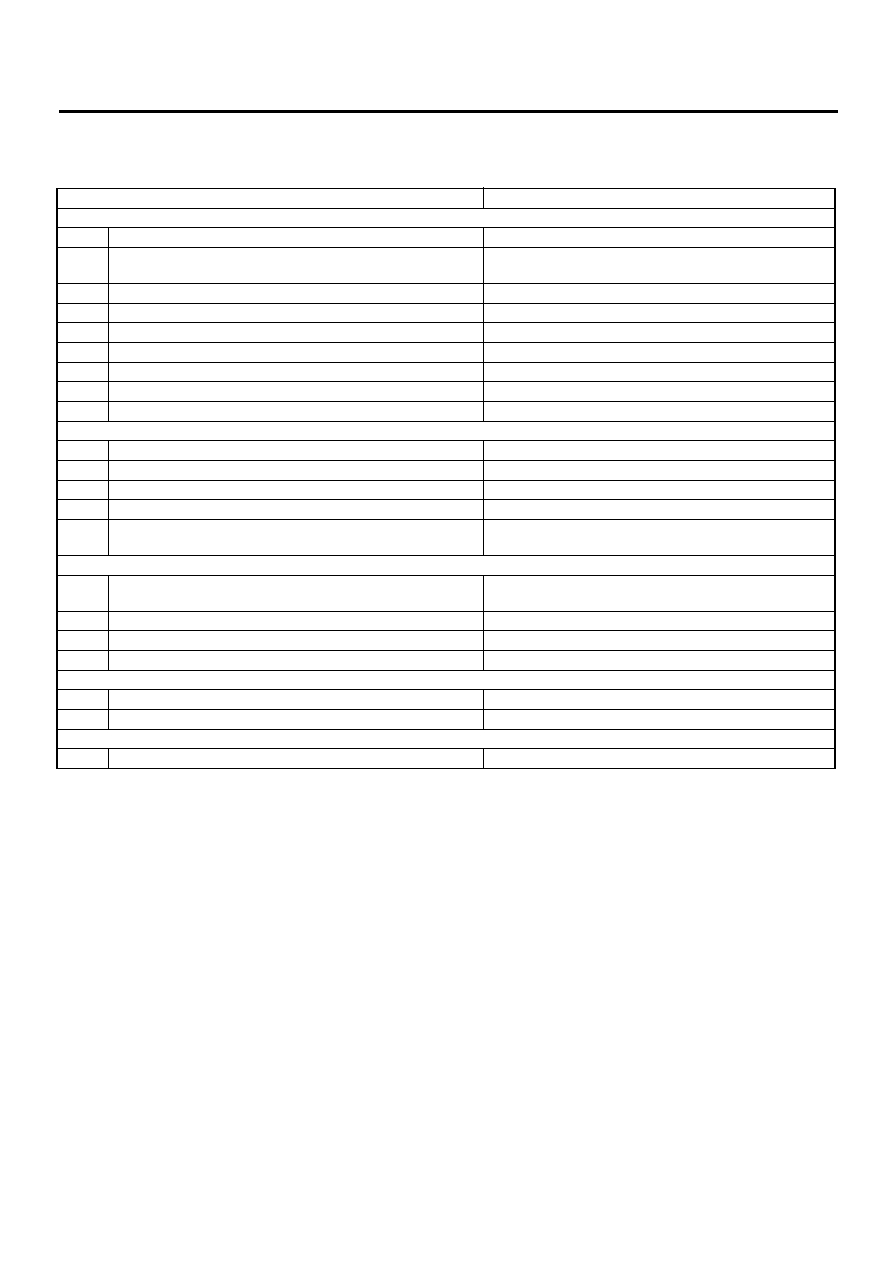Subaru Legacy III (2000-2003 year). Manual - part 191

FU(H4SOw/oOBD)-70
FUEL INJECTION (FUEL SYSTEMS)
FUEL SYSTEM TROUBLE IN GENERAL
26.Fuel System Trouble in General
A: INSPECTION
NOTE:
• When the vehicle is left unattended for an ex-
tended period of time, water may accumulate in the
fuel tank.
To prevent water condensation.
(1) Top off the fuel tank or drain the fuel com-
pletely.
(2) Drain water condensation from the fuel filter.
• Refilling the fuel tank.
Refill the fuel tank while there is still some fuel left in
the tank.
• Protecting the fuel system against freezing and
water condensation.
(1) Cold areas
In snow-covered areas, mountainous areas, ski-
ing areas, etc. where ambient temperatures
drop below 0
°
C (32
°
F) throughout the winter
season, use an anti-freeze solution in the cool-
ing system. Refueling will also complement the
effect of anti-freeze solution each time the fuel
level drops to about one-half. After the winter
season, drain water which may have accumulat-
ed in the fuel filter and fuel tank in the manner
same as that described under Affected areas
below.
(2) Affected areas
When water condensation is notched in the fuel
filter, drain water from both the fuel filter and fuel
tank or use a water removing agent (or anti-
freeze solution) in the fuel tank.
• Observe the instructions, notes, etc., indicated
on the label affixed to the anti-freeze solution (wa-
ter removing agent) container before use.
Trouble and possible cause
Corrective action
1. Insufficient fuel supply to the injector
1)
Fuel pump will not operate.
❍
Defective terminal contact.
Inspect connections, especially ground, and tighten
securely.
❍
Trouble in electromagnetic or electronic circuit parts.
Replace the fuel pump.
2)
Lowering of fuel pump function.
Replace the fuel pump.
3)
Clogged dust or water in the fuel filter.
Replace the fuel filter, clean or replace the fuel tank.
4)
Clogged or bent fuel pipe or hose.
Clean, correct or replace the fuel pipe or hose.
5)
Air is mixed in the fuel system.
Inspect or retighten each connection part.
6)
Clogged or bent breather tube or pipe.
Clean, correct or replace the air breather tube or pipe.
7)
Damaged diaphragm of pressure regulator.
Replace.
2. Leakage or blow out fuel
1)
Loosened joints of the fuel pipe.
Retightening.
2)
Cracked fuel pipe, hose and fuel tank.
Replace.
3)
Defective welding part on the fuel tank.
Replace.
4)
Defective drain packing of the fuel tank.
Replace.
5)
Clogged or bent air breather tube or air vent tube.
Clean, correct or replace the air breather tube or air vent
tube.
3. Gasoline smell inside of compartment
1)
Loose joints at air breather tube, air vent tube and fuel
filler pipe.
Retightening.
2)
Defective packing air tightness on the fuel saucer.
Correct or replace packing.
3)
Cracked fuel separator.
Replace the separator.
4)
Inoperative fuel pump modulator or circuit.
Replace.
4. Defective fuel meter indicator
1)
Defective operation of fuel meter unit.
Replace.
2)
Defective operation of fuel meter.
Replace.
5. Noise
1)
Large operation noise or vibration of fuel pump.
Replace.